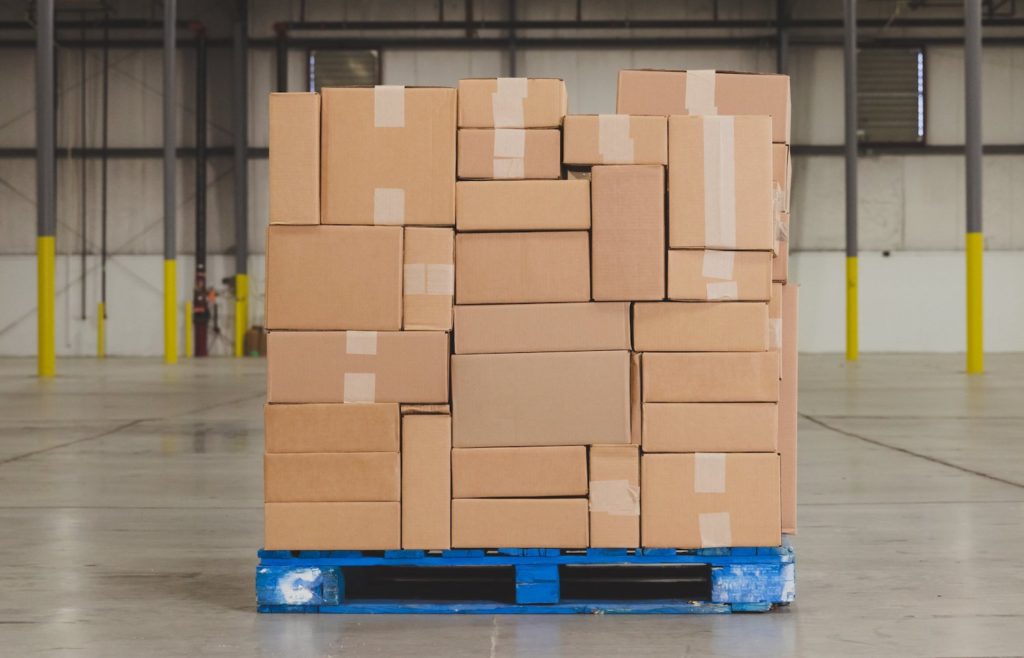
Moving from Reactive to Proactive Strategies: Considerations for Mitigating Risk
Supply Chain Risk Mitigation begins with Proactive Planning
If we’re honest, few of us enjoy operating in a reactive state. It’s stressful not being prepared. Many businesses, however, are doing just that; crossing their fingers that risks won’t materialize and everything will go as expected. But if you’ve been in the world for more than a few hours, you know to expect the unexpected. It’s how you lessen the impact of the unexpected and mitigate those risks that matter.
A simple definition of the difference between reactive business strategies and proactive ones can be explained in one sentence by Scott Thompson, a contributing writer for Chron.com: “Reactive business strategies are those that respond to some unanticipated event only after it occurs, while proactive strategies are designed to anticipate possible challenges.” We couldn’t have said it better ourselves.
The keyword to focus on here is “unanticipated.” While every risk to the enterprise cannot be anticipated, there are plenty of things a company can do to shed light into the darkness. It takes planning – continual, data-driven planning. There really is no such thing as reactive planning. Being in a reactive state means “reacting to events or situations rather than doing something first in order to change or prevent something,” according to the Cambridge Dictionary. That “doing something first” is planning. If you haven’t planned, you’re automatically reactive.
Proactive, on the other hand, implies planning has already taken place. “Intending to produce a good result or avoid a problem, rather than waiting until there is a problem,” says the Cambridge Dictionary. As an organization, how do you approach supply chain risk mitigation? Is there a structured supply chain planning process that anticipates risks so they can be mitigated before they have time to cause interruptions?
The following tips aim to help your organization move from reactive to proactive, dynamic planning in order to become a more agile enterprise.
Tip #1: Move from Manual to Automated Processes
The first proactive step to take towards a responsive supply chain is to make a transition in how risk is identified. Manual hunting and pecking may discover some risks, but this process takes time and frequently misses many of the risks that haven’t historically been a threat. When it comes to the supply chain, risks can cause upstream and downstream problems that directly and indirectly affect the bottom line. Any process that delays the identification of risks will also delay their mitigation.
Supply chain logistics, if done correctly, identifies all of the risks across the supply chain that are labor-intensive, requiring plenty of data entry, often in static spreadsheets. Because shipments generally follow the same lanes, the process is repeatable. Erroneous and/or incomplete data could cause serious supply chain disruption, leading to lost profits and a damaged reputation. Organizations must get control over the risks plaguing the supply chain.
By shifting towards a more automated, dynamic risk assessment and analysis, companies can quickly respond, often before the risk has matured into a real threat. An integrated solution that continually collects real-time supply chain data can be configured to provide notifications of risks across all nodes in the supply chain. Instead of time-consuming, error-prone and partial aggregation of data, organizations have real-time, actionable data at their fingertips. This is data that informs decisions, empowering leaders with information they can immediately use to proactively plan for all types of risks, even when those risks are unfamiliar.
Gathering the data required for these insights is nearly impossible to do manually. There are simply too many changing data points involved and too few resources.
Tip #2: Measure The Right Things
With traditional planning, supply chain status is often unreliable and based on a single mode. Too many decisions are made on incomplete data. Even worse, many of those decisions are completely reactive, happening after the risk is imminent or has already caused problems. Part of this data is incorrect; even more is incomplete and almost all are discovered too late. This is why Forbes and KPMG found 84 percent of CEOs are concerned about the quality of the data they’re basing their decisions on.
Companies must first measure the right data points in order to implement an effective supply chain risk mitigation strategy. Once a shipment is in route, the window is closing on what risk mitigation efforts can be launched. Instead, having insights into key performance metrics early, even a week or more before pickup, gives companies the opportunity to change course if needed. Multiple modes, lanes, carriers, equipment and more can be modelled simultaneously against potential pitfalls to reveal patterns, severity and possibilities.
Related: Supply Chain Risk Management Software: Changing How Risk Is Assessed and Managed
If supply chain leaders are looking in the wrong direction, relying on bad or incomplete data, risks are missed. When risks are allowed to mature, they become dangerous to the supply chain. Instead of proactive planning that leverages real-time and accurate data with prescriptive analytics, business leaders are forced to engage in damage control. The right data makes all the difference. An integrated solution will collect and present data continually so leaders can spend more time proactively planning and less time cleaning up the mess.
Solutions must go beyond identifying risks to provide reliable risk scoring for multi-modes, including global, multimodal, distribution centers and ports. Risk scoring operationalized the data to make it instantly usable. Decision makers need not spend time gathering and analyzing data but to simply look at a dashboard that displays the risks and their related scores. These scores provide instant visibility into the severity and likelihood of the risk occurring, as well as recommendations for mitigation of each risk. By being able to prioritize mitigation efforts, companies are more efficient and effective, focusing on the right data and strategies.
Tip #3: Be More Nimble to Change
Change happens. We all know that the best practice is to anticipate change, but how? How does an organization transition from this reactive mode to proactive planning that constantly surveys the landscape for the most pressing risks? With traditional planning, there are simply too many risk factors that change too often to be considered holistically. Organizations do the best they can, but things are missed. The supply chain planning process is little more than crossing fingers and hoping for the best.
Fortunately, it’s easier than ever for organizations to drive a more responsive supply chain, one that leverages different types of data. Integrated solutions already exist, helping companies quickly transition from traditional planning to dynamic planning. The organizations that embrace this agility through automation experience value often on day one.
The answer is to integrate supply chain risk analysis software that uses machine learning, artificial intelligence and multi-factor prescriptive analytics to automatically identify risks across the supply chain. These may be risks like weather events that can delay or damage shipments and infrastructure outages that can interrupt on-time deliveries.
Related: Leveraging Intelligent Automation in Logistics
The solution goes further to also identify areas for cost savings related to these risks. For instance, when weather data is combined with operational data, prescriptive analytics may reveal a simple change in the mode of transportation may not only ensure the shipment makes it to its destination on time but also at a lower cost. Reefer trucks, for example, are expensive and potentially unnecessary if temperatures along the route have a high likelihood of remaining within tolerance levels. Companies need to know this ahead of time so they can plan. This is the dynamic planning that is so valuable, one that enables companies to adapt to change rather than hope it doesn’t happen.
Tip #3: Partner with a Supply Chain Risk Mitigation Expert
There are several supply chain risk identification and monitoring solutions on the market. The problem is most of these stop at the monitoring. They don’t provide the prescriptive analytics to help companies determine which course of action is best to mitigate those risks. Understanding the risks is, of course, a priority, but the real work comes in how to proactively plan so those risks can either be prevented altogether or at least minimized.
Related: Using Risk Scores to Facilitate Risk Management
When looking for a supply chain risk mitigation solution, be sure it is capable of continually assessing risks across multifactors, historically, in real-time and predictively. Risk scoring is a highly-valuable feature that speeds decisions. It’s one thing to bury risk data in reports. It’s quite another to see those risks scored, ranked, color-coded and displayed on a dashboard in real time.
Companies need this kind of data that enables them to practice proactive planning with full confidence in these risk scores and data behind them. Because the data is comprehensive and accurate, it can be relied on as the source of record. Proactive planning becomes more attainable, fostering a more responsive supply chain.



